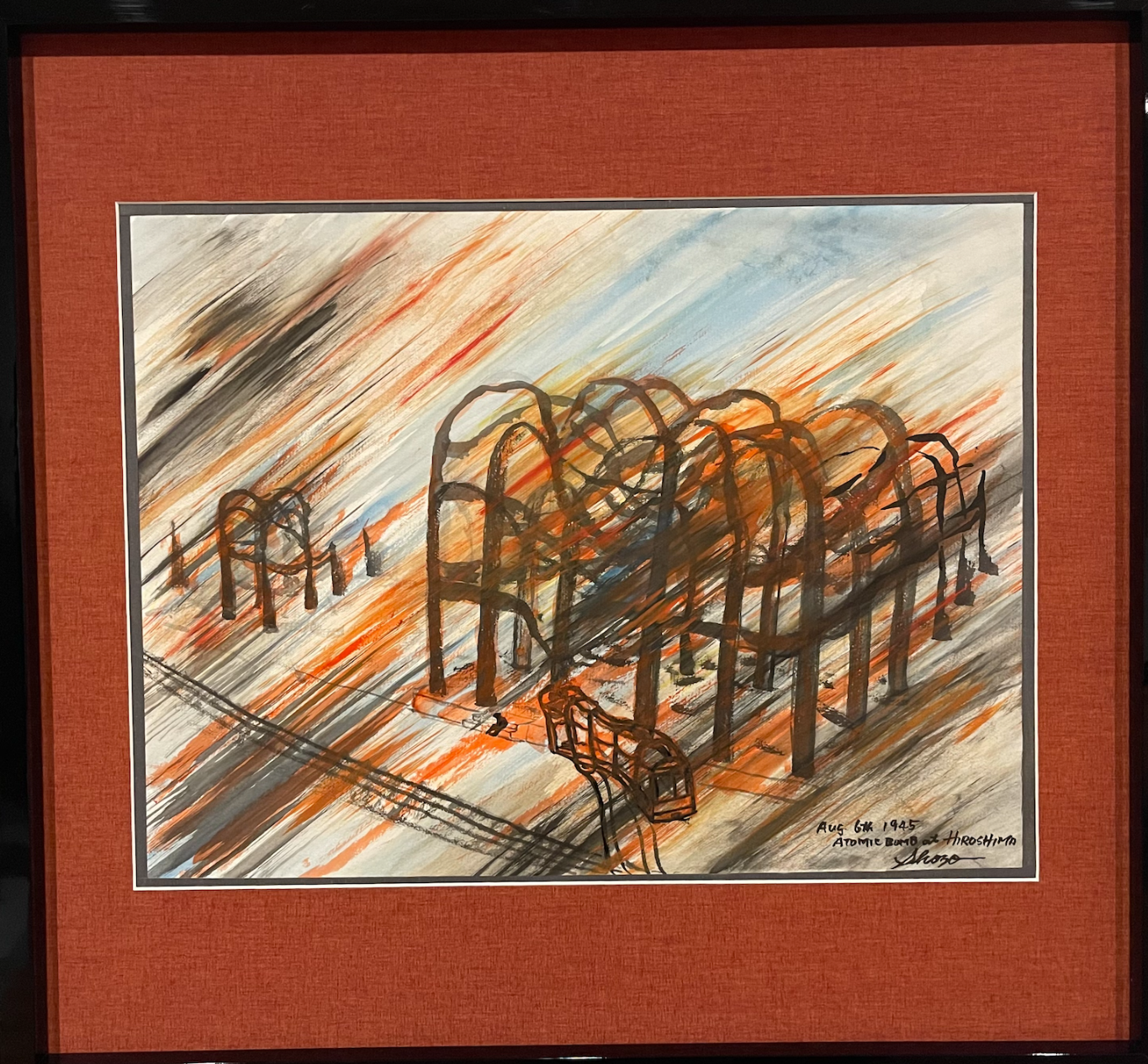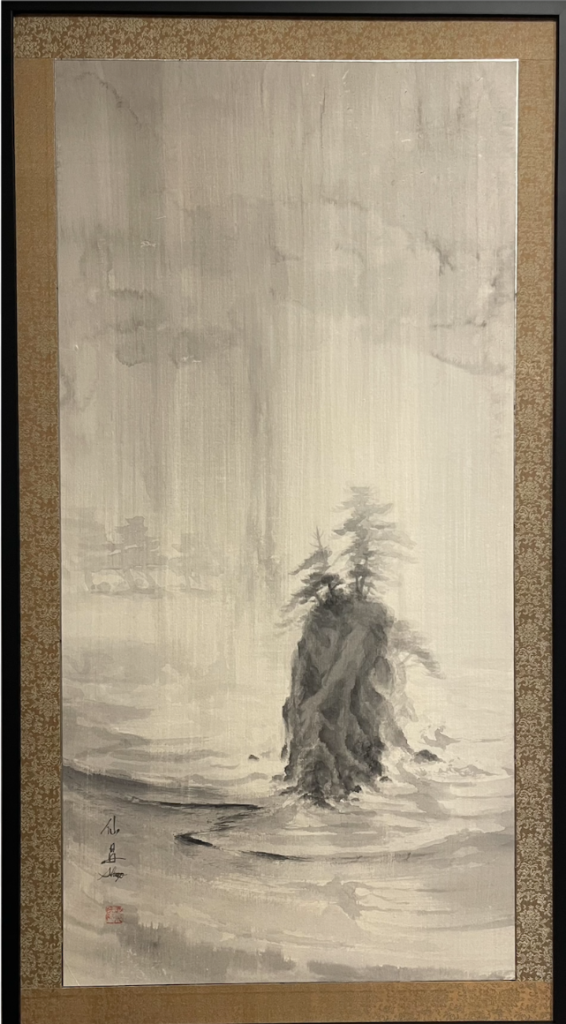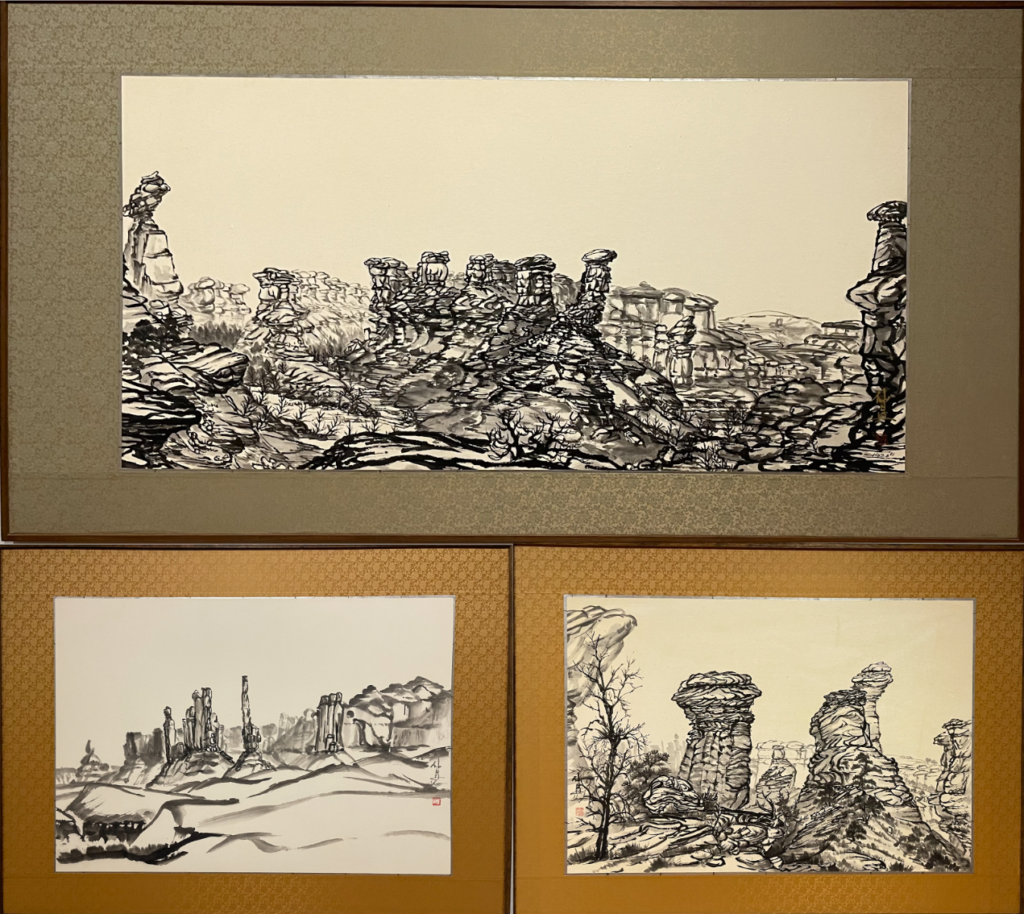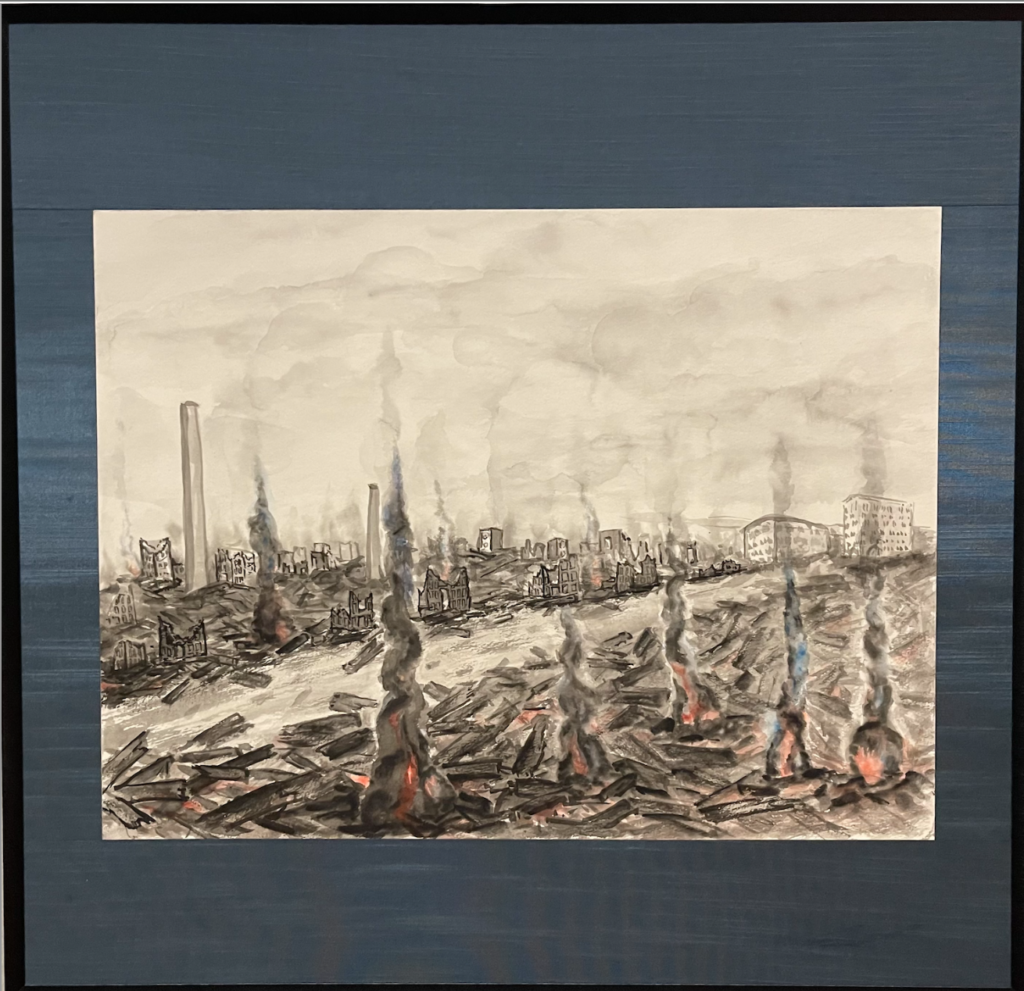FINE ARTS| November 8, 2023
Shozo Sato’s Ink Wash Exhibit at Krannert Art Museum
Jenna Nabelsi

Endurance, Shozo Sato, 2021
Sato depicted the destruction and damage of property he witnessed after the bombing of Hiroshima. Photo by Jenna Nabelsi
From early March until December 16, 2023, Shozo Sato’s Ink Wash paintings are on display at the Krannert Art Museum at the University of Illinois Urbana-Champaign. Shozo Sato is a professor emeritus (retired professor with honor) in theater and art for UIUC and the founder of the Japan House (Japanese Cultural Center). This exhibit was an especially rare occurrence as Shozo Sato has mentioned he normally prefers to keep his work to himself and make it solely for his reflection enjoyment. However, Sato shared his works of art with the Krannert Art Museum for visitors of UIUC to explore, enabling the public to experience an immersive experience showcasing the beauty of Japanese art, culture, and history.
Shozo Sato was born in Japan, where he studied and mastered several Japanese art forms. He then arrived at UIUC as a visiting artist, going on to establish Japan House and teach several classes, igniting a wave of Japanese culture at UIUC. His persistent belief in the importance of Japanese art forms led him to be internationally recognized and renowned as a master of Calligraphy, Sumi-e (ink painting), Ikebana (flower arrangement), Kabuki (theater), and Tea Ceremony. Sato utilized these art forms to share Japanese symbolism, observance of Western landscapes, and his experience with/history of the destruction of his hometown, Osaka. His persistent belief in the importance of Japanese art forms led him to be internationally recognized and renowned as a master of Calligraphy, Sumi-e (ink painting), Ikebana (flower arrangement), Kabuki (theater), and Tea Ceremony. Sato utilized these art forms to share
Japanese symbolism, observance of Western landscapes, and his experience with/history of the destruction of his hometown, Osaka.
Sato’s exhibit began with an explanation of the evolution of the art form of ink-wash painting. Buddhist monks brought the art form Sumi-e from China to Japan as a common hobby that many people could adopt. Ink wash painting represented “a disciplined mind and body, transferring the artist’s Chi or life force onto paper.”
Sato harbored this technique to first depict important symbols of beauty, life, and nature. He used specific and purposeful brushstrokes to portray fruits and flowers as glowing, fragrant, and lively. For example, his piece titled Murmuring Surf portrayed lone pine trees surrounded by endless water, symbolizing themes of persistence and overcoming adversity. Sato often utilizes common forms of nature to preach life lessons and his take on life. However, he also portrayed nature’s power of destruction and unpredictability, as shown in his painting titled Fury of the Pacific. Sato was able to employ several brushstroke techniques to capture the many facets of nature.

Murmuring Surf, Shozo Sato, 1995
This image depicts “a few resolute trees clinging to a craggy rock”. It portrays the “muted atmosphere of a rainy day”. Photo by Jenna Nabelsi

Fury of the Pacific, Shozo Sato, 1994
This is Sato’s recreations of a violent storm hitting the California coast. He painted wild hurricane winds, crashing waves, and fallen trees. Photo by Jenna Nabelsi
Additionally, Sato depicted scenes from his travels to America and Western landscapes. Sato has expressed that he feels that Western landscapes are “otherworldly.” He stated that he “had never experienced grandeurs of nature like this” about American landscapes and chose to make several of them the subjects of his paintings.

The Exotic American West paintings, Shozo Sato
Sato painted towering rock landscapes from several mountainous regions of the United States including Utah and Arizona. Photo by Jenna Nabelsi
Finally, Sato painted images from what he experienced in the destruction of Osaka and Hiroshima when he was very young. At just seven years old, Sato’s hometown (Osaka) was bombed, and his witnessing of mass destruction led to his wish for and portrayal of peace in many of his works. Several of his paintings depict the rubble and collapse of buildings, as well as his struggle with losing loved ones.

Osaka Firebombing, Smoking Ruins, 2021
This image portrays the smoking ruins of buildings and land following the firebombing of Osaka. Photo by Jenna Nabelsi
Shozo Sato’s work is notable because the medium of art, ink-wash painting, offers him the flexibility to express a wide variety of emotions and themes and therefore, he is not limited and can paint freely. What sets his art apart is the pairing of monochromaticity and expression/abstractionism. One would think that normally monochrome art would express less emotion and freedom of interpretation yet Shozo Sato still manages to invoke an array of expression and emotion. His invention of new styles of art has fundamentally changed the previous scope through which art was understood. Shozo Sato’s ink-wash exhibit demonstrates the unlimited possibility of art and is a great exhibit to pay a visit to.
The exhibit will remain open at the Krannert Art Museum until December 16, 2023.
References
___________________________________________________________________________________________________________
- Heckel, J. (2023, March 21). Krannert Art Museum exhibition explores Suibokuga and watercolor paintings by Shozo Sato. ILLINOIS. https://news.illinois.edu/view/6367/1943102166
- Krannert Art Museum. The Ink Wash Paintings of Shozo Sato | Krannert Art Museum. (n.d.). https://kam.illinois.edu/exhibition/ink-wash-paintings-shozo-sato
- Shozo Sato. Department of Theatre. (n.d.). https://theatre.illinois.edu/people/profiles/shozo-sato/
- Wikimedia Foundation. (2023, October 11). Shōzō Satō. Wikipedia. https://en.wikipedia.org/wiki/Sh%C5%8Dz%C5%8D_Sat%C5%8D
About the author
Jenna Nabelsi is a freshman at UIUC. She is studying Molecular and Cellular Biology on the premedical track, aspiring to become a surgeon. Some of her favorite hobbies include tennis, music, and reading and her favorite spot on campus is BrewLab.